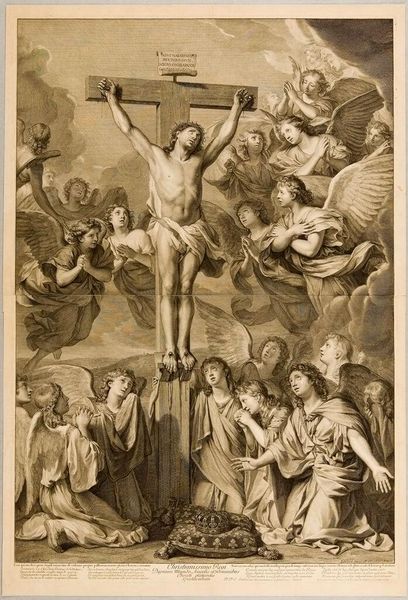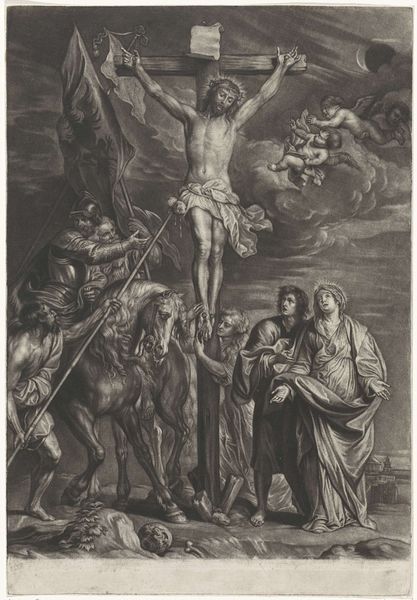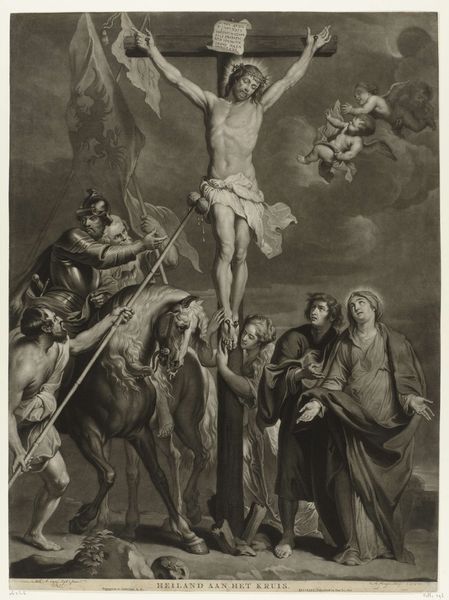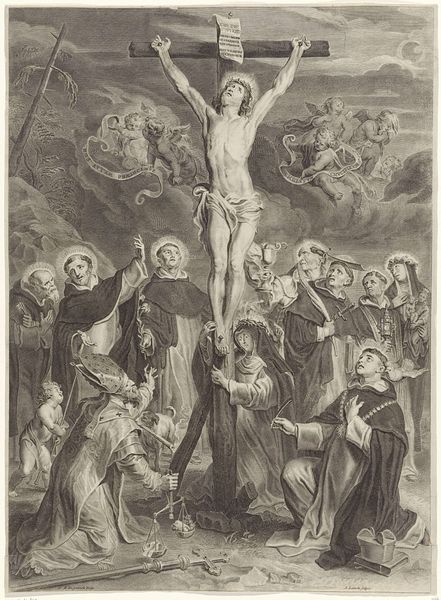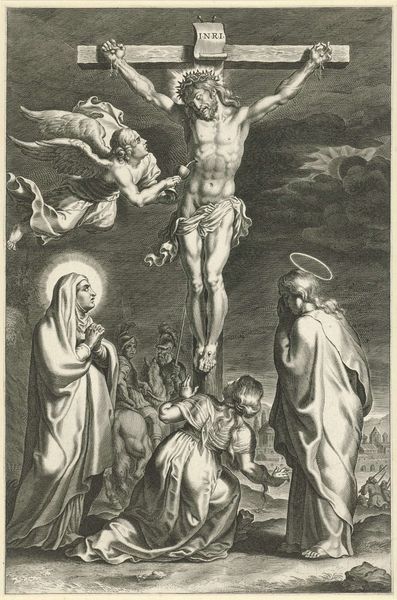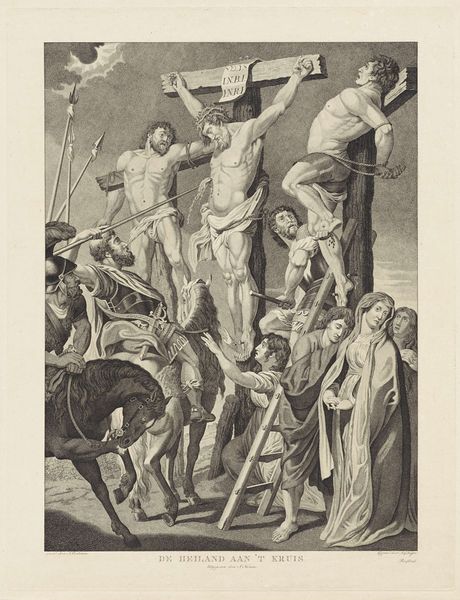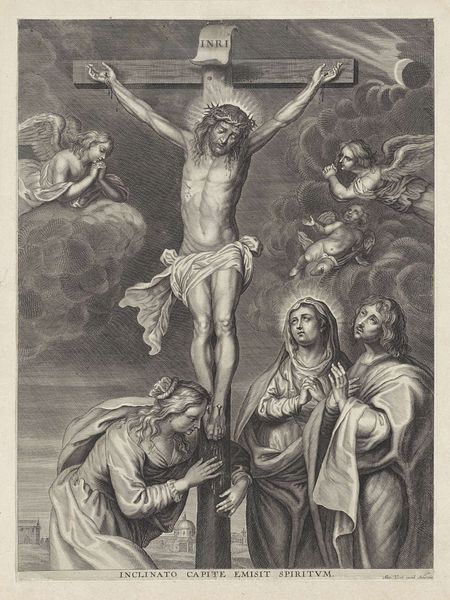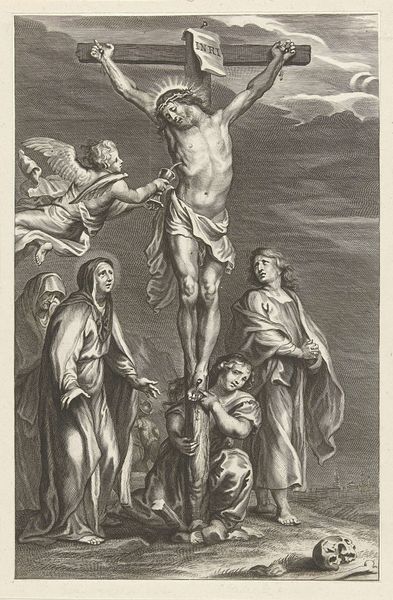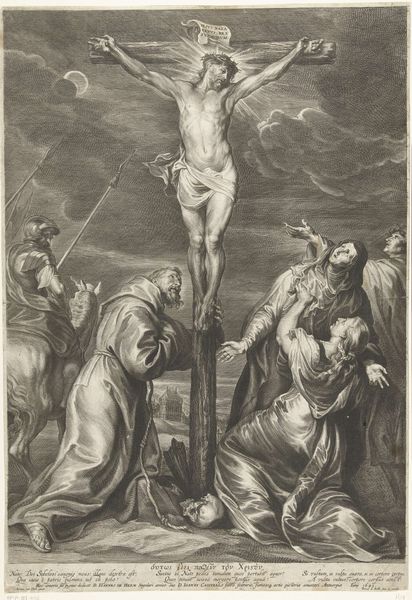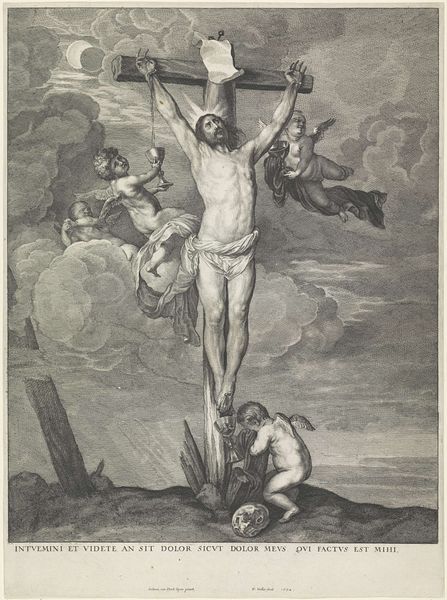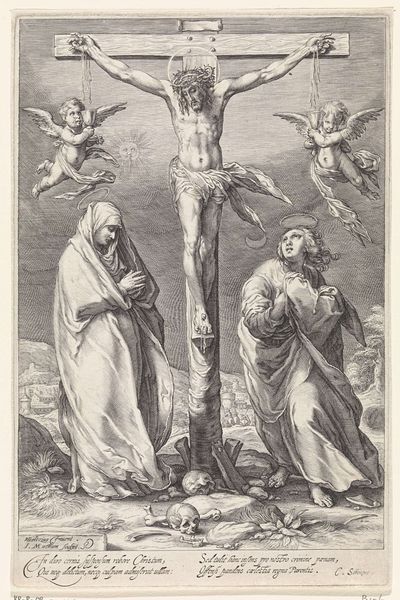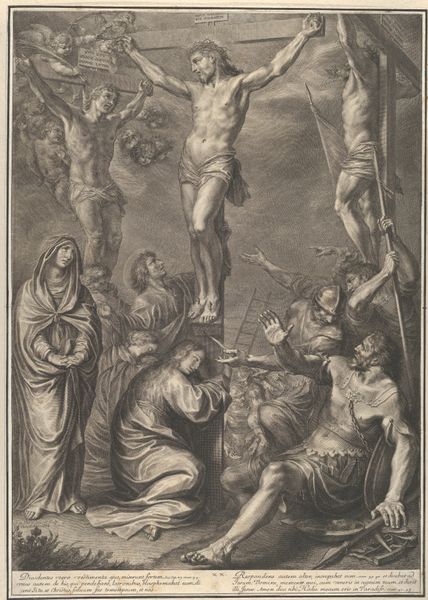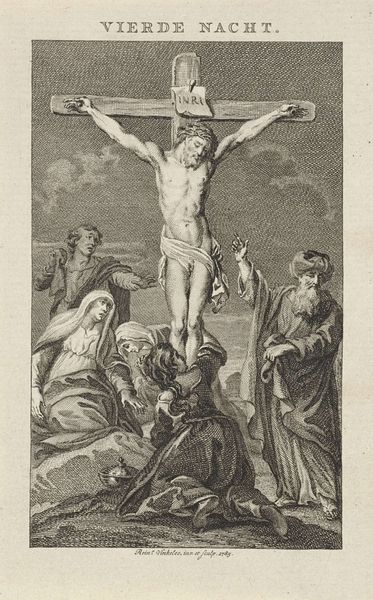
print, engraving
#
portrait
#
baroque
# print
#
caricature
#
figuration
#
portrait drawing
#
history-painting
#
engraving
Dimensions: height 499 mm, width 650 mm, height 490 mm, width 652 mm
Copyright: Rijks Museum: Open Domain
Curator: This is Gérard Edelinck’s "Christus aan het kruis," dating sometime between 1666 and 1707, here at the Rijksmuseum. It’s an engraving. The detail, especially considering the medium, is remarkable. Editor: It's bleak, undeniably. I see immediate themes of grief and injustice, especially looking at the posture and expressions of the surrounding figures. They're not merely witnesses; they're mourners actively implicated in this tragedy. Curator: Notice how Edelinck orchestrates a sophisticated play of light and shadow across the composition. The corporeal figure of Christ, centrally located, stands out from the somber shades as it cascades throughout this meticulous portrait drawing. How do you read the spatial relations here? Editor: It feels theatrical, almost performative. Edelinck is deliberately staging this scene and amplifying it. The angels, the crown discarded on the lower part… What statement do you think the Baroque elements seek to make? Who are the assumed viewers, and how are they to grapple with this symbol of sacrifice? Curator: We see exemplary baroque characteristics. Note the artist's intense focus on detail, enhanced chiaroscuro to heighten the drama. From a formal perspective, one could read the upward gazes of the surrounding figures, which point back to the figure of Christ on the crucifix. This technique guides the viewer's eye while building compositional unity. Editor: Beyond technique, I’m drawn to the politics. The print portrays not only the scene of crucifixion, but also makes a compelling visual argument regarding sacrifice, authority, and the established hierarchies of power, whether political, religious or familial. Its reproduction and dissemination underscore its continued significance, engaging with evolving concepts of justice, liberation, and revolt. Curator: Indeed, your focus makes it clear this print is so much more than just technical proficiency. I notice now a more profound engagement with complex themes, brought forth through visual analysis, offering space for social and cultural conversations. Editor: Well, reflecting on your insights, perhaps what makes the artwork so striking, and so vital, even centuries later, is the collision of form and substance. The questions raised around it prompt new ones that continue to ignite the human spirit.
Comments
No comments
Be the first to comment and join the conversation on the ultimate creative platform.
